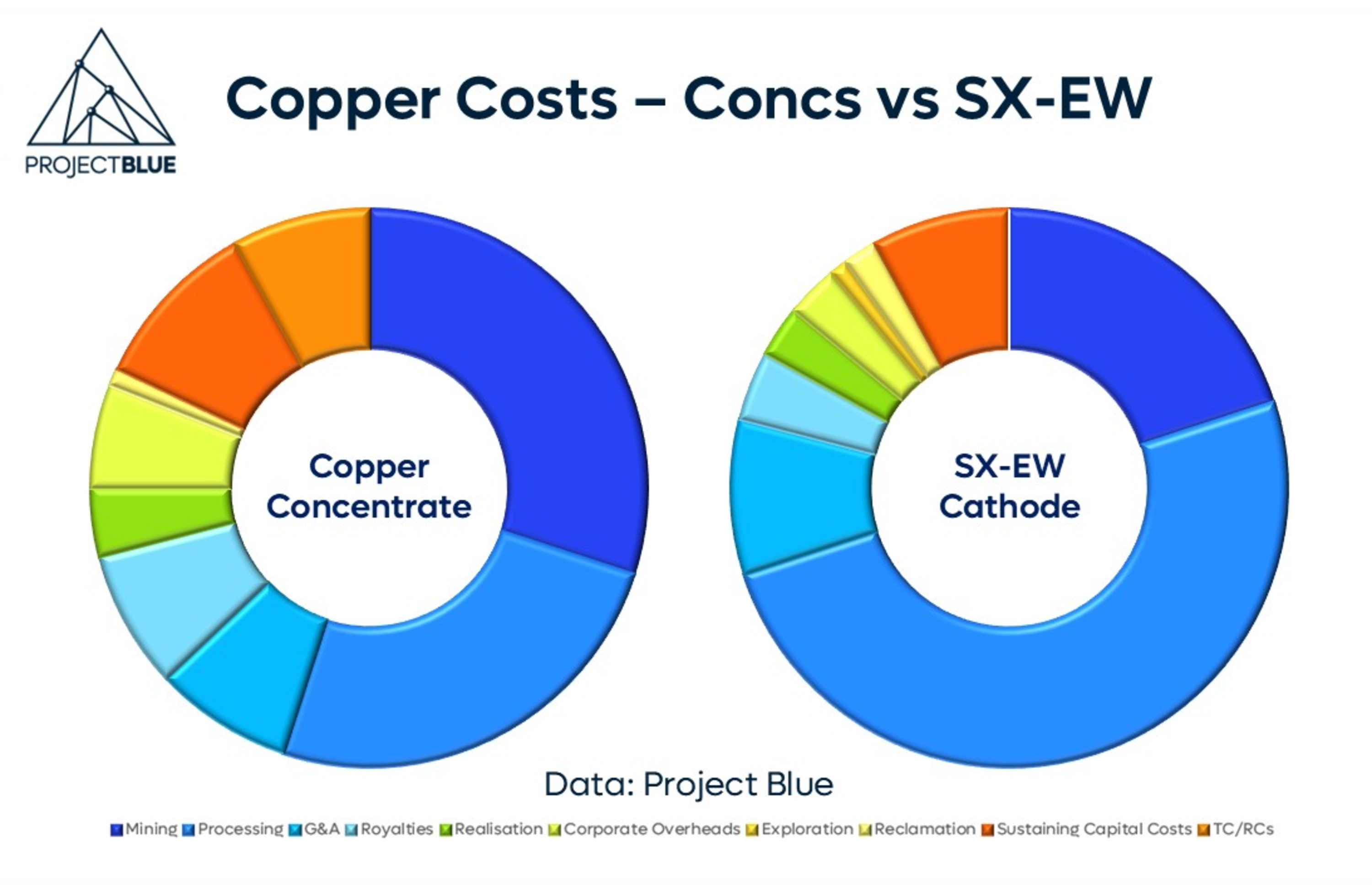Digging into copper costs: Concentrate vs SX-EW and the road ahead
Opinion Pieces

18
Aug
2025
Digging into copper costs: Concentrate vs SX-EW and the road ahead
Project Blue’s copper analysts use data from our Copper Cost Service to compare the contrasting cost breakdowns at concentrate and SX-EW producers.
Copper concentrate producers
Concentrate producing assets typically have far more diversified flow sheets than those of SX-EW producers. For concentrate producers, the mining and concentration stages constitute the largest cost components, together accounting for more than half of total production costs.
Sustaining capital costs represent another significant cost component, reflective of increasing costs of maintaining and retrofitting ageing infrastructure across some of the largest operations.
Royalties have risen in response to higher copper prices, while realisation and transportation costs have increased due to the longer shipping distance involved compared to SX-EW production.
SX-EW cathode producers
On the other hand, SX-EW producers operate with a less diversified flow sheet, with mining, leaching and extraction stages accounting for the majority of overall costs. As a result, the relative share of costs from G&A, transportation, royalties and other categories is smaller.
This cost structure can offer greater predictability in certain market conditions, but it also exposes SX-EW operations more to fluctuations in reagent costs, acid supply and changes in ore grades.
What risks do miners in different countries face moving forwards?
Our Copper Cost Service also provides detailed cost breakdowns by country, and for this analysis, we have assessed concentrate production in Chile, China, Peru and the USA.
We have analysed different assets on the basis of a typical flow sheet of mining copper sulphide ores and processing them into a concentrate product, with a typically average copper grade of 25-30%.
Our analysis of direct cash costs across these assets and countries indicates that the largest cost components are labour, electricity, and diesel/petrol. Even a marginal increase in labour costs could have a disproportionately large impact on total costs.
Costs under pressure across key countries: labour, energy, and FX risks rising
USA: Labour costs account for just under 70% of total mine site costs, reflecting significantly higher wage rates relative to other producing countries. Diesel costs have also risen sharply over the same period, increasing from US$0.1/lb Cu to nearly US$0.7/lb Cu today.
Chile: Labour constitutes a smaller share of total costs compared with the USA; combined with electricity and fuel, these inputs represent just over 70% of total costs.
Peru: Labour costs at mining operations have increased substantially over the past decade, more than quadrupling.
Exchange rates represent another critical factor
In recent years, significant devaluations of the Chilean peso, Chinese renminbi, and Peruvian sol against the US dollar have offset some cost increases in these countries, while contributing to higher relative labour costs in the USA.
Since the start of this year, however, the US dollar has begun to depreciate against the renminbi and other currencies, driving labour costs higher. If this trend persists, total operating costs across the copper sector are likely to rise, a development that could be further amplified by ongoing inflation in both energy and consumables markets.
Project Blue's Copper Research Service
Our Copper Research Service provides detailed analysis and long-term forecasts for the copper market to support strategic and investment decisions - speak to our experts to learn more.